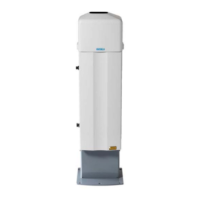USER'S GUIDE____________________________________________________________________
84 __________________________________________________________________ M210482EN-D
Telegram Structure Remarks
a. Spaces (20 hex) always appear with the following bytes: 5, 7,
11, 20, 26, 32, 38, 44, 49, 54, 59, 65, 71, 76, 79, 82, 91.
The only other byte that may contain a <SPACE>, is byte 78,
provided that the dimension is in meters.
Numbers are always given with the leading zeros as in bytes
27 to 31 in the example.
b. NODET (and NODT) indicates that the value in question has
not been detected because, for example, there was only one
cloud layer or no cloud layer at all.
Like any measured value, NODET also contains information
about the result of the measurement.
NODET may appear instead of cloud layers, minimum
vertical extensions of clouds, and vertical visibility.
c. When bytes 83 to 90 signal an CL31 alarm, all cloud
detection values within the telegram are replaced by minus
signs (-, 2D Hex). For example:
----- is shown instead of bytes 27 to 31.
d. All values given are height above the runway level;
Ceilometer CL31 itself might be located above or below the
runway level. Therefore, byte 72 must always contain a sign
byte, either + or -.
Failure and Warning Messages
Bytes 83 to 89 of the LD40 standard telegram indicate warnings and
errors. A '0' signifies that no error of that error group has happened.
An alarm causes data telegrams to contain invalid data. A warning status
does not cause invalid data.
The following tables describe how CL31 is mapped to the LD40 error
groups. See Table 12 on page 85 for the definition of the different error
groups.

